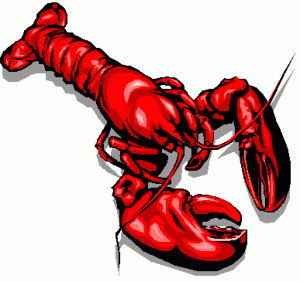On the surface of it, you might think that being a fresh fish market is a pretty simple business: you buy fish; you sell fish.
But if you are Cousins Fish Market, specializing in putting fresh fish on the table for wholesale and retail customers from Lake Placid to the Catskills, from Binghamton and Syracuse to New York’s Capital Region, the enterprise is more like a combination of being a merchant, a day trader and an overnight package delivery service.
But every day, Cousins Fish Market rises to the challenge with the help of a great team of nearly 60 people and EXEControl from Ebeling Associates.
 Throughout each day and night, orders for fresh fish and other seafood pour into Cousins Fish Market from restaurants, hospitals, schools, and supermarkets. Calls come into the office, are left on the answering machine or arrive by fax. The orders specify what kind of fish the customer wants and what quantity.
Throughout each day and night, orders for fresh fish and other seafood pour into Cousins Fish Market from restaurants, hospitals, schools, and supermarkets. Calls come into the office, are left on the answering machine or arrive by fax. The orders specify what kind of fish the customer wants and what quantity.
The office crew at Cousins enters each order into EXEControl which generates tags that contain the customer’s name, what they’ve ordered, the number of pounds and what geographic delivery run they are on.
Each day at noon, a tractor-trailer leaves Cousins in Albany for Boston. The truck picks up fresh seafood there and returns by Cousins between nine and ten at night. When the truck arrives, the team kicks into high gear, unloading the truck and “putting up” the orders.
Behind the scenes, Cousins managers have to update their costs because fish prices are volatile, changing every day. Joyce Desantis, Secretary of Cousins Fish Market, says, “We get a worksheet on EXEControl that allows us to manually adjust the pricing. Supermarkets might be one price, but we also have bear in mind that many of our smaller customers might not be able to fully absorb a huge increase in a particular fish. Discretion and judgment are involved.”
She says, “When it comes to putting the orders together, we have specialists: one guy does haddock; another guy does lobster, and so forth. When the haddock guy is finished, he sends down a sheet with the weights on it, and EXEControl produces the invoices. Tags are attached to the orders (including special, state-required “clam tags” generated by EXEControl), and everything goes to the loading dock.”
“What sets us apart,” she says, “is that every piece of fish we sell is eyeballed, touched, sized, packaged, and prepared for the customer. We return fish that are not right. As a result, sometimes they call us ‘rent a fish’ in Boston.”
 The orders are sorted and loaded into a fleet of trucks. “The order of delivery changes every day,” Desantis says. “We have to consider how busy we are, which establishments opens and what time, and road miles.”
The orders are sorted and loaded into a fleet of trucks. “The order of delivery changes every day,” Desantis says. “We have to consider how busy we are, which establishments opens and what time, and road miles.”
The drivers are given a “Driver’s Sheet” and an invoice for each delivery they are going to make. Some 320 invoices are generated each day by EXEControl. When they drivers return, every bill is accounted for: checked in as charged, cash on the bill, or cash on account.
Desantis says, “I run a list that tells me everyone who hasn’t checked in. If you don’t check in, there better be a really good reason.”
EXEControl, which replaced a previous system, also handles invoices and generates checks for some 50 active vendors who supply Cousins Fish Market. “I like this system a lot,” Desantis says, “it’s easy to use and it is easy to train people to use it. Aside from our people, it is the heart of our business.”
At about 10 o’clock in the morning, the loading dock is clean and the cooler is empty. But then at noon, the truck leaves for Boston, and it starts all over again.



